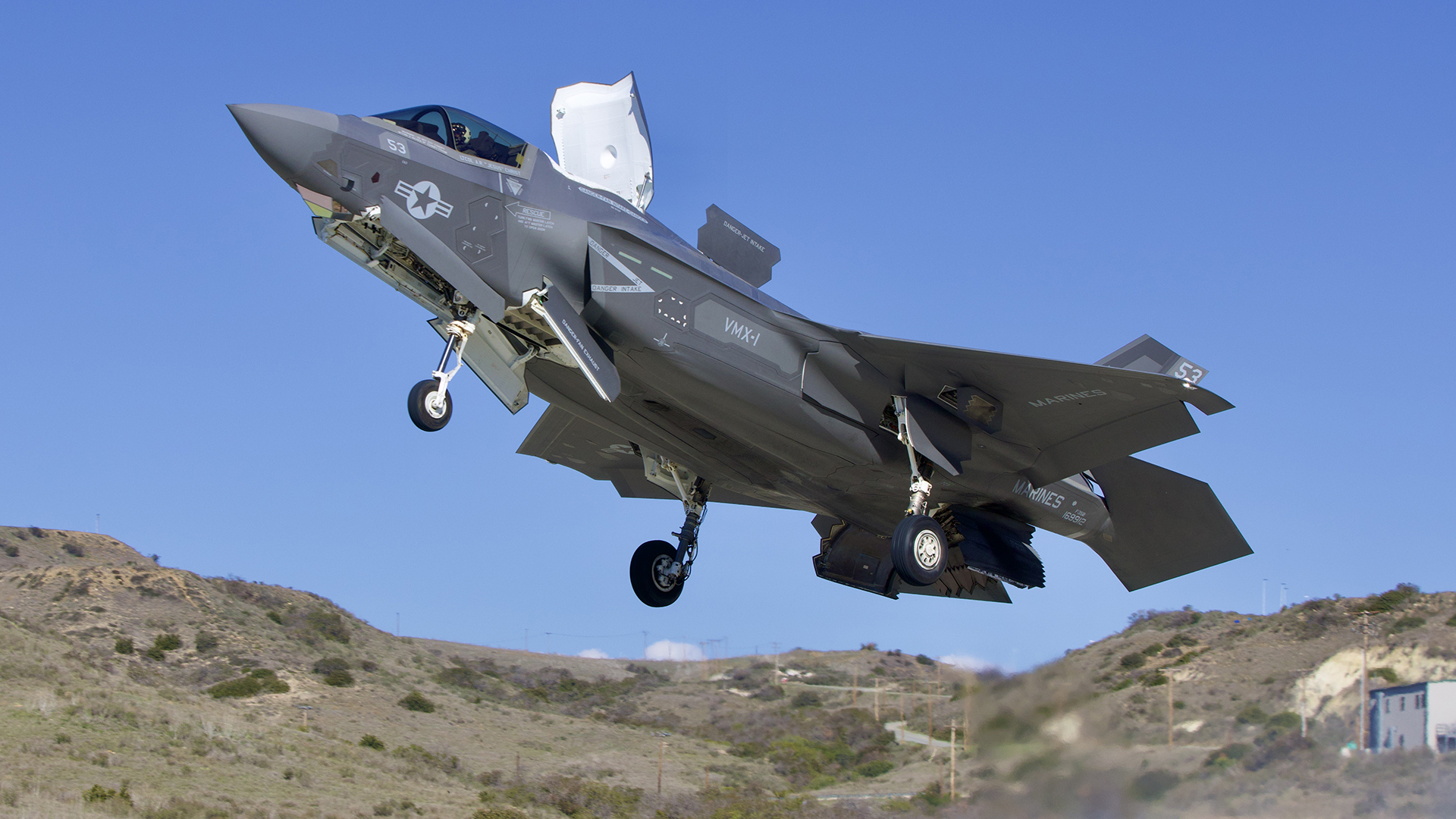The United States Marine Corps’ (USMC) F-35B Joint Strike Fighter is getting out of its comfort zone, as leaders look to short stretches of roads and other potential improvised operating areas to prove the first stealthy Short Take-Off and Vertical Landing (STOVL) fighter’s ability to fight from austere, remote, and hastily established locales. Such capabilities could prove to be absolutely essential in a high-end conflict in the Indo-Pacific, namely against China. But in order to prepare for such a conflict, a full-on playbook has to be written on how to make these types of highly-agile forward operations a reality, with logistics being a huge hurdle to overcome.
On Thursday, December 8, two F-35Bs from the USMC Operational Test and Evaluation Squadron One (VMX-1) recovered at Camp Pendleton in Southern California. The F-35s did not land on the mountainous base’s 6,000 foot runway. Instead, they did so at the smaller and far more austere Helicopter Outlying Field (HOLF).
The unique recovery was part of a series of test events known at VMX-1 as ‘Obsidian Iceberg.’ This is an organic effort to realize the distributed operations concept for the STOVL-capable F-35B by solving operational challenges associated with operating a fifth-generation fighter at remote locations that have little organic logistical support, let alone long, tidy runways.
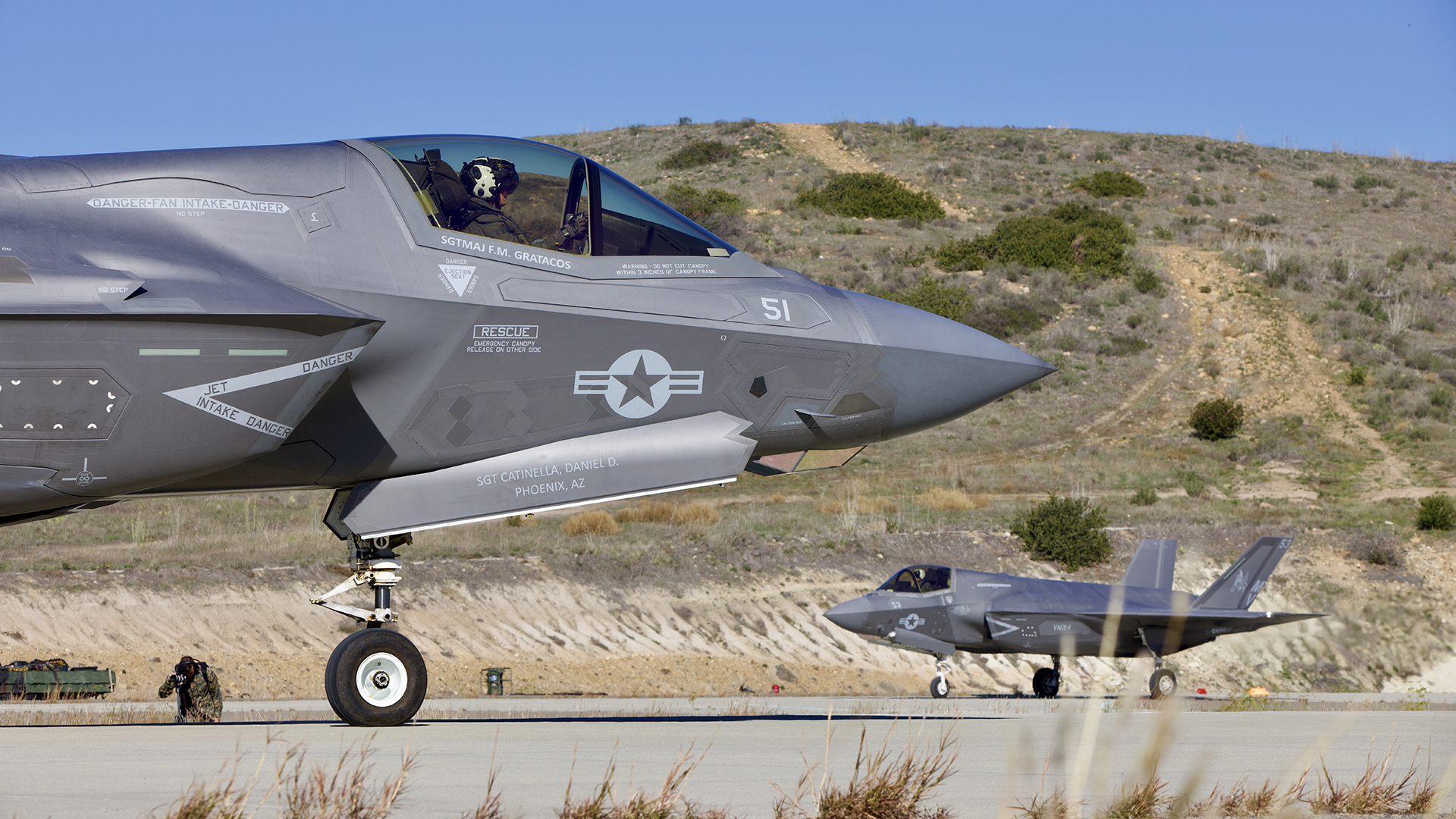
The War Zone sat down with the former Commanding Officer of VMX-1, Col. Byron ‘Shreik’ Sullivan, and the squadron’s new Operational Test Director, Lt. Col. Robert ‘Champ’ Guyette, to discuss what has been happening over the last several months as VMX-1 assesses various capabilities, concepts, and initial tactics, techniques, and procedures for F-35B Expeditionary Advanced Base Operations (EABO).
According to the 2019 Marine Aviation Plan, EABO is described as follows:
EABO is a future naval operational concept that mitigates peer competitors’ anti-access / area denial capability by creating a more survivable, resilient, and persistent forward- postured force. The EABO concept is designed to re-establish the force credibility required to have a deterrent effect. Using key maritime terrain in the vicinity of close and confined seas, EABO provides decision-makers with sea denial options that are coercive, but not escalatory.
Nested within other naval and joint concepts such as Joint Access and Maneuver in the Global Commons (JAM-GC) and Littoral Operations in a Contested Environment (LOCE), EABO sustains and advances the inside force’s ability to leverage the lethality of the outside force.
The EABO concept is comprised of low-signature, mobile, relatively low-cost capabilities operating in expeditionary and temporary locations. These capabilities provide the joint force commander with the ability to target and strike the adversary while also making up the backbone of an active maritime defense-in-depth.
EABO provides the Joint Force Maritime Component Commander (JFMCC) with sea denial options by using advanced bases to position and operate joint aircraft. All six functions of Marine aviation can be executed through the use of mobile and expeditionary EABs. By using all available basing options, Marine aviation can expand the reach and lethality of the joint force commander.
EABO is a major initiative that could prove essential to winning a war in the Pacific, and has been written about extensively by The War Zone. The U.S. military knows that in operating against a near-peer adversary over large distances, much of which is water, they will have to be able to keep the enemy guessing as to where its prized fifth-generation fighters are operating from. Just getting an F-35, which has a max combat radius of between roughly 475 and 675 miles, depending on the variant, close enough to be relevant to the fight at all is another critical factor.
The Marine Corps’ F-35B is rapidly maturing in the expeditionary environment, so much so that the two pilots chosen to land at the HOLF had never landed in an environment like it before. Guyette told The War Zone, “The pilots reported absolutely no issue. So as a test pilot, to me, that confirms that the airplane is maturing rapidly in the expeditionary environment.” Landing at the HOLF, which has a wide paved surface, was not so much about testing the F-35B and its pilot, but rather constituted a training event that tested the integration with the ground and logistic elements.
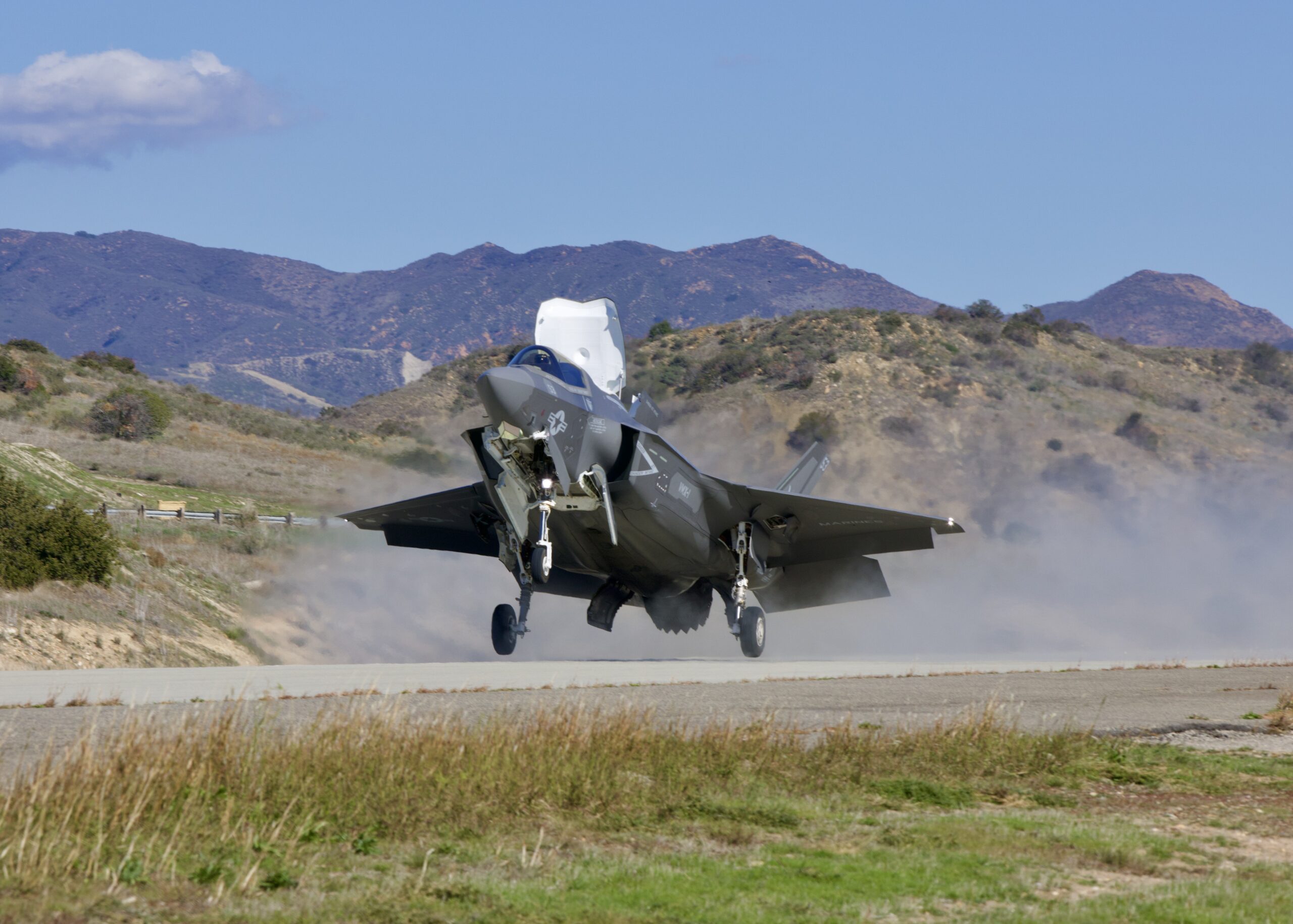
Guyette elaborated, telling us, “It was about integrating with the ground combat element and the logistics combat element, because in the Pacific, things like communications and logistics become paramount, just due to the ‘tyranny of distances’ that the Pacific Ocean provides to us. So bringing an F-35 to the HOLF wasn’t specifically for the F-35 effort, it was more to expose the ground combat element to the unique requirements of operating a platform like the F-35 in a semi-austere environment and also executing our tentative conops (concept of operations) for logistics support, so refueling, maintenance, data transfer and things like that.”
For the landing at Camp Pendleton, VMX-1 teamed up with Marine Air Group-39 (MAG), which is the only MAG in the USMC not based at an air station but rather at a camp. MAG-39 has both H-1 and V-22 squadrons, but they also have a Marine Aviation Logistics Squadron which provides support.
Guyette added, “So working with our partners at MAG-39, which is a rotary-wing MAG, I think we were able to accomplish pretty much all of our objectives at the HOLF. I think that’s important to note because what you’re seeing is a blending of the Marine Air Groups now. When I got into the Marine Corps 15 years ago, there wasn’t a whole lot of interaction between rotary-wing MAGs and fixed-wing mags and the control group MAG. So now we’re all kind of working together as a team, because we realize that the strength in the Marine Corps, as it always has been, is our ability to quickly work together using our common baseline as Marines and bring forth a unique and very potent capability to the Pacific.”
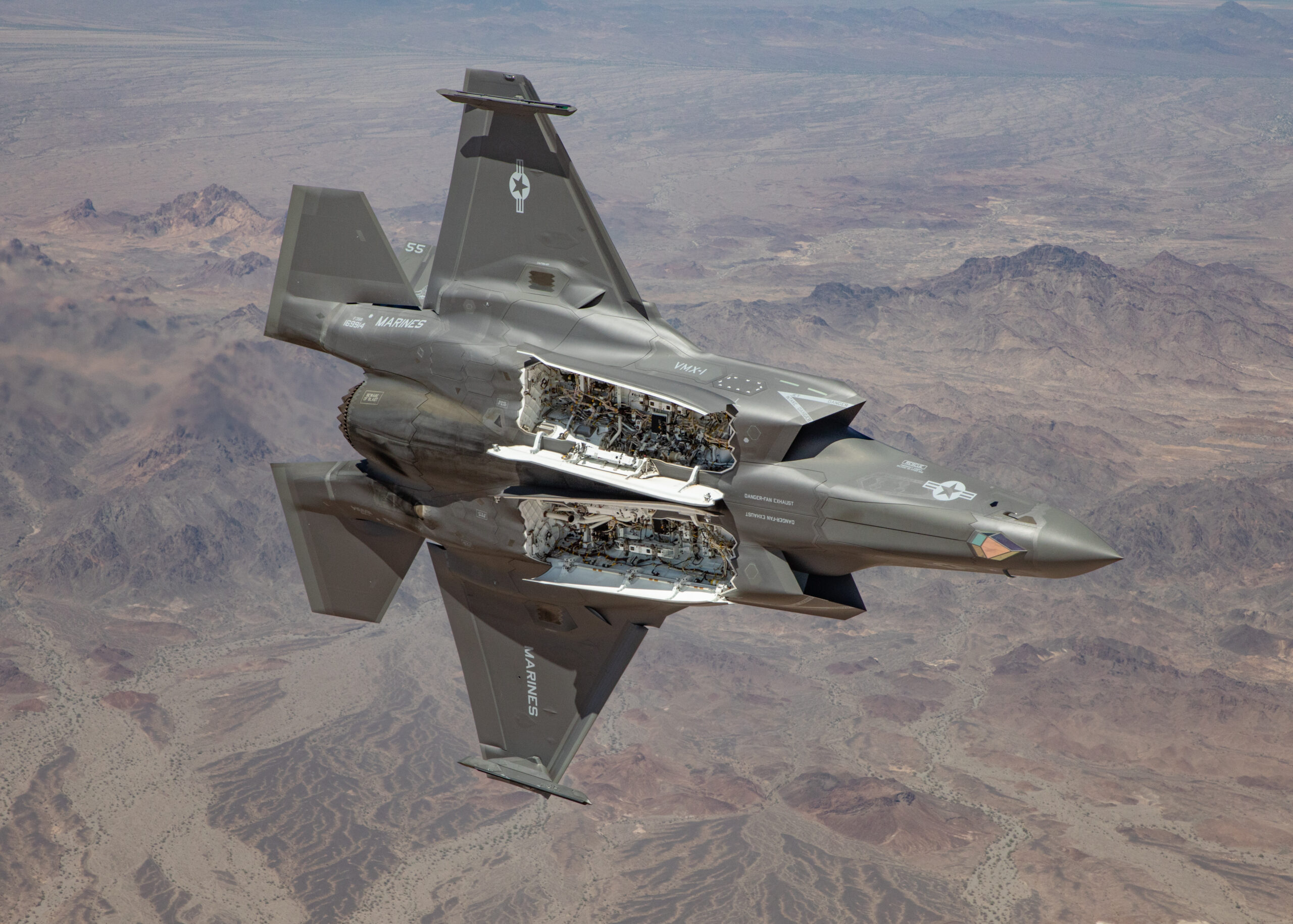
“It’s about the F-35 executing sustained combat operations from places that, quite honestly, the enemy’s not gonna expect us to be operating from,” he continued. “What you are also seeing is the integration of Developmental Test [DT] and Operational Test [OT] into a unified effort to develop these capabilities all the way from the engineering, flight sciences side all the way to the operational and suitability side. The traditional boundaries of DT and OT are kind of evaporating and we are leveraging the Marines in these organizations to bring efficiency and speed and capability to the fleet.”
VMX-1 is learning much more than just how and where it can safely operate from. The squadron is also testing how it can quickly transmit data from the aircraft back to its home operating area so maintainers can be better prepared for upcoming maintenance.
Guyette said, “I think the common misconception about the F-35 is that its data requirements make it extremely fragile in an operational environment. Like with all modern pieces of equipment, they have some assumptions in the lab but the Marine Corps has always been very good at taking things that maybe initially were supposed to be built for fixed bases, you know, like a big deck aircraft carrier, or an Air Force base with thousands of feet of runway and kind of hardening them. The same can be said for the data support requirements. Our Marines at VMX-1 are using systems that are integrating beyond-line-of-sight capabilities, like on the MV-22, for example, to create those data connections. So we’re looking at how we can execute quick turn maintenance on the F-35 from an expeditionary field inside of the enemy’s targeting cycle, but exactly what data do we need and what sort of format to send back to the rear and then what is the transport vehicle by which we communicate that.”
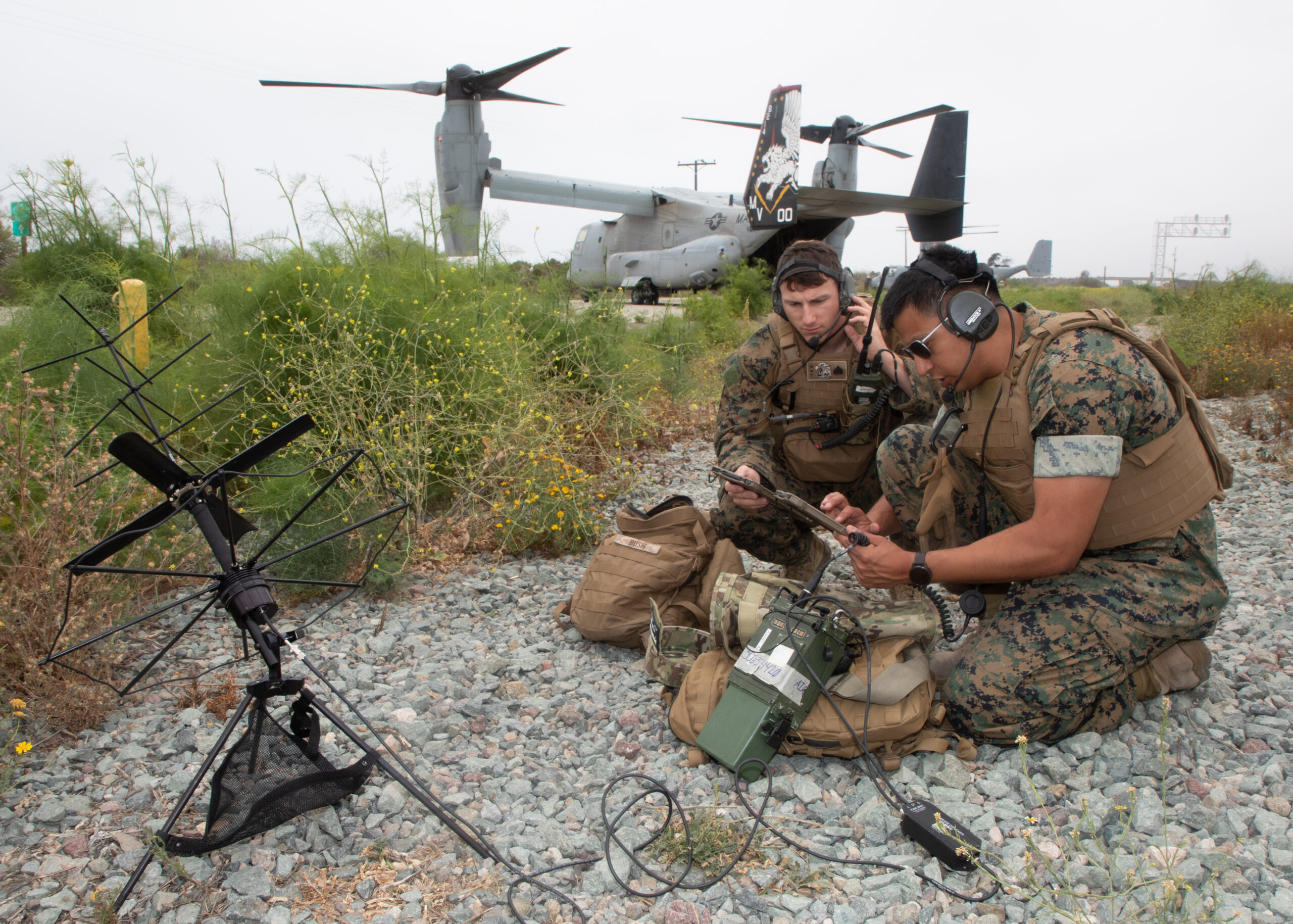
“We are looking at communications pipelines and burst transmissions of smaller data, in order to allow our F-35s to report their health in a low observable, rapid fashion back to the manager so that we see the info go outside the weapons engagement zone where our logistics and maintenance support would be. It helps us make logistical decisions, in order to push out logistics to where the F 35 is going to spend the night.”
“Marines are leveraging digital passage by using a thing called the Mesh Network Manager (MNM) between an MV-22 and the F-35B. MNM is one of three things that make up the MAGTF Agile Network Gateway Link, or MANGL,” Guyette said. The other two are the Software Reprogrammable Payload AN/ARC-254C radio, and the Marine Air Ground Tablet, or MAGTAB. As the Marine MQ-9 becomes available, Marines plan to use the UAS to act as a network enabler over the ocean acting as a digital quarterback. As Guyette told us, “When you see these glossy brochures, you see systems connected by lightning bolts. We have lightning bolts on our patch and our job is to verify and validate that those lightning bolts actually do exist. These lightning bolts behave very differently over water compared to land and we are all very aware that we will be fighting with blue underneath us instead of brown.”
While Obsidian Iceberg’s main objective is to assess the minimum landing width and length for the F-35B, VMX-1 is also using the events to refine procedures to ‘hot seat’ pilots in the forward zone, as well as testing foreign object damage (FOD) mitigation devices to help clear austere landing zones.
Col. Byron ‘Shreik’ Sullivan, who was the commanding officer of VMX-1 for two years before retiring this past June, told The War Zone, “Right after taking command, we started taking a heavy look at how we are going to do this EABO thing. We looked at it from all aspects of not just the F-35, but how to support the F-35. Where are we going to get the gas? What are the real Training Tactics Procedures (TTP) going to be on? How and what are we actually going to try and do … looking at the threat and how responsive the threat can be because obviously, you’re very vulnerable when you land and refuel. You’ve got all your gear down, if you will. And what I mean by that is all your aircraft are on the deck, or maybe most of them are. And so when we look at Pacific Command, or really anywhere else, the one thing that you can’t get while airborne is ordnance.”
“We looked at this a couple [of] different ways and thought about what kind of packages we can put together. Can we load ordnance inside of a V-22, or can we use the CH-53K and load three 600 gallon tanks underneath it and fly into an area and drop them with a small team of guys with refueling capabilities and pumps and stuff like that? Now all of a sudden I have almost 28,000 pounds of gas on the deck, and I get another CH-53 loaded with ordnance and boom, I just took any 3,000 foot stretch of road and turned it into an EABO.”
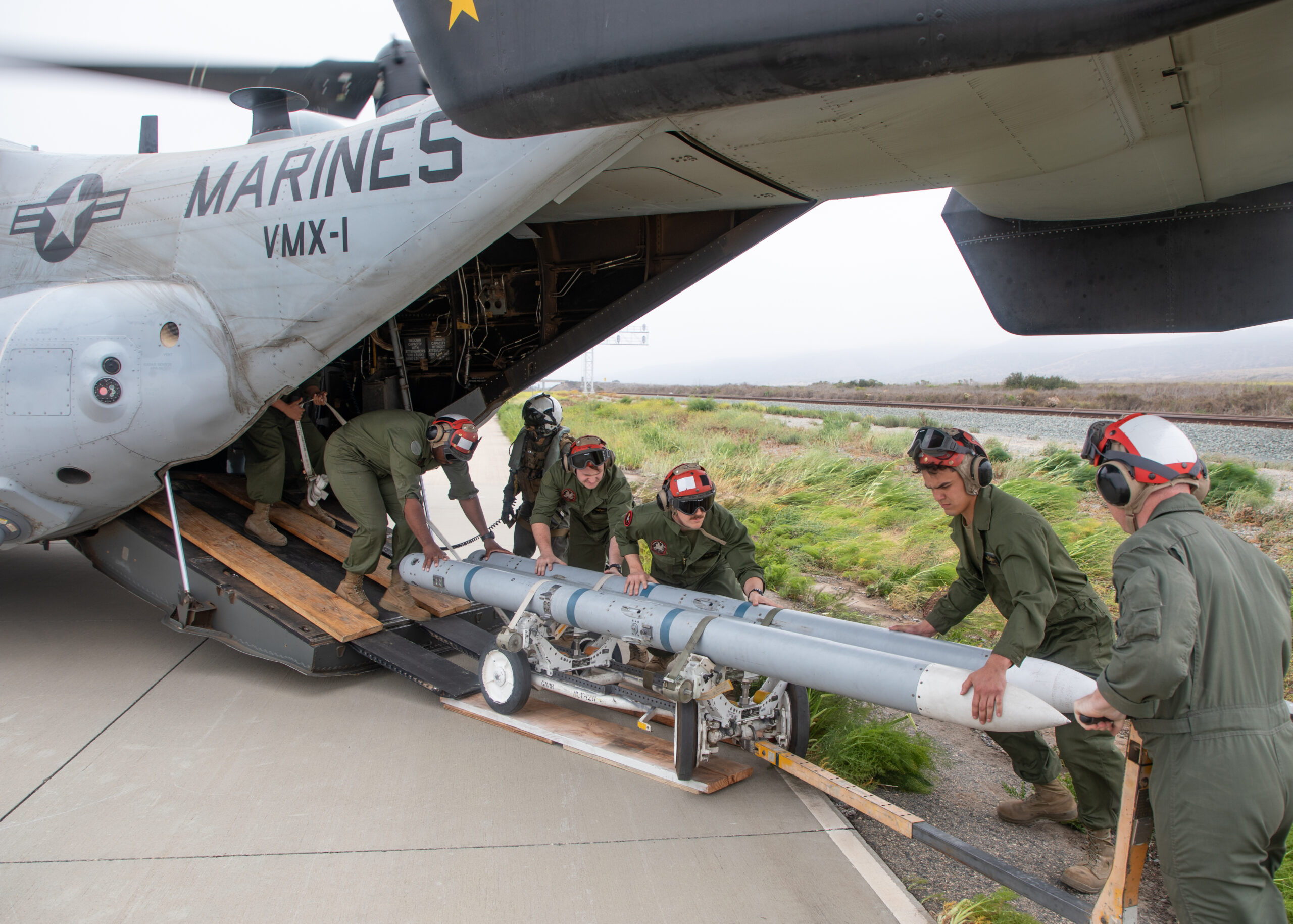
Unlike the traditional Forward Arming and Refueling Point (FARP), EABO comes with the ability to quickly set up and quickly break down because sometimes the EABO will be inside the weapons engagement zone of the enemy.
As Sullivan explained, “Much different than like a FARP, I don’t want it [EABO] to be there for long. When we land, we have to be able to land, get the ordnance, get whatever gas I can and be gone. And so I don’t want to tie a timeframe to it but I’ll just tell you that it needs to be in an extremely short period of time before the ordnance possibly comes raining down on your head.”
“Traditionally we’ve always done these FARP things where we have a lot of stuff. This concept that we’re trying to work on with EABO and Obsidian Iceberg is we’re going to land in a very small area, we don’t even know where we’re going to land. Then we’re going to get redirected, we’re going to come back and we’re going to have a playbook to take that 3,000 foot piece of road and land an F-35 here and F-35 there, get the gas and get the ordnance and get out.”
VMX-1 started the testing using the nearby Camp Wilson, which is located at 29 Palms in California, but has since moved to more challenging environments. Col. Sullivan is an avid surfer – one day while driving along the freeway coming back from a morning surf at San Onofre beach, he looked out and saw a long stretch of road inside the restricted area of Camp Pendleton which was part of the old Pacific Coast Highway. Sullivan said, “I was like, why don’t we just land there? And so as it turns out, I brought it up on Google Maps on my phone and sent it to my buddy, Col. ‘Brutus’ Hutchins who was the MAG-13 CO. ‘Brutus’ sent me back the range regs that had that area marked down as an AV-8B landing spot. And so the range regs supported this concept and we started planning.”
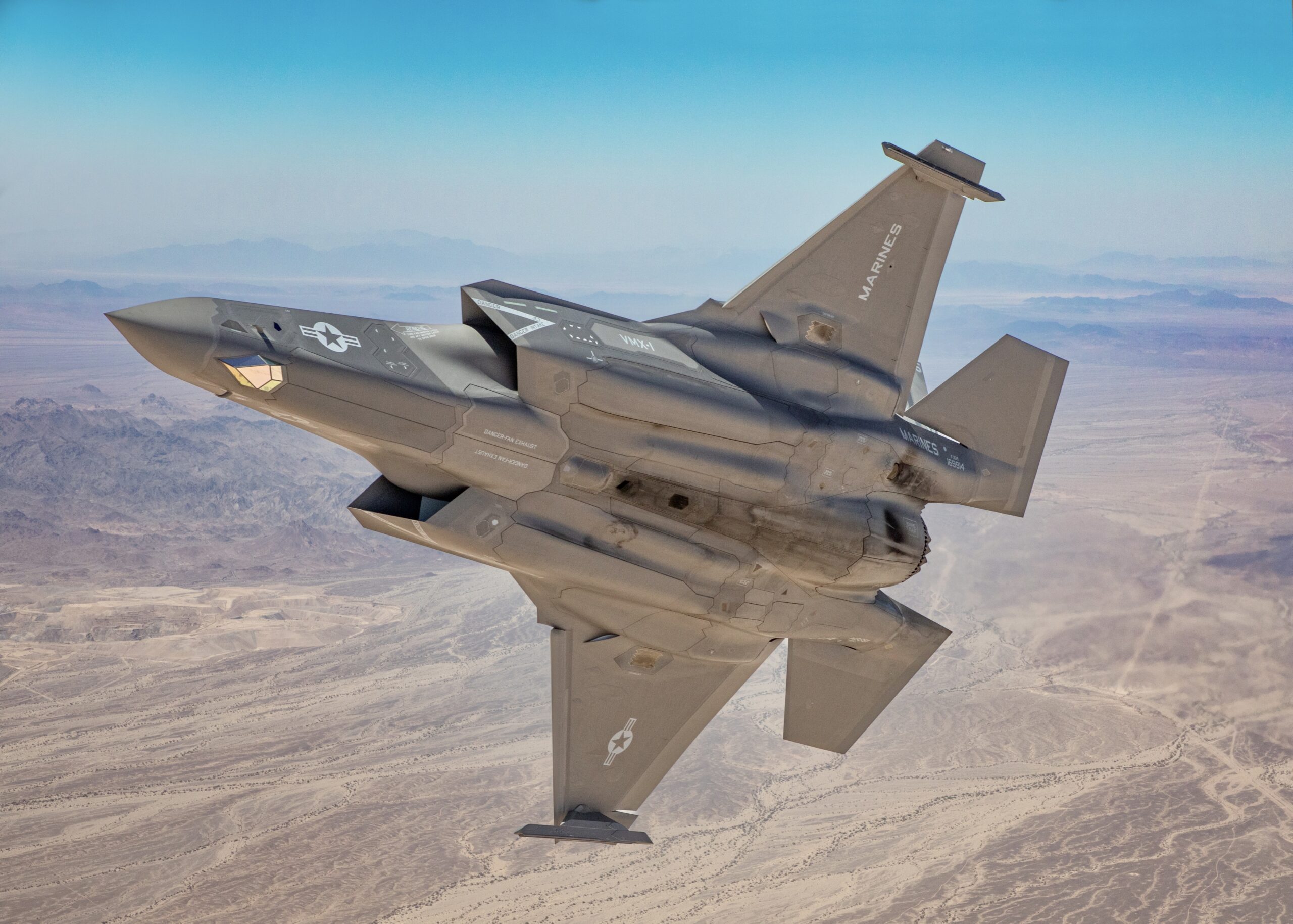
One of the major issues with Obsidian Iceberg was getting the go-ahead to narrow down the width with which an F-35B could land. The original runway width limitation for the F-35B was 95 feet. With the average U.S. road lane clocking in at around 12 feet wide, that is like landing on a major highway which is not often found on small islands in the Pacific. So using the crawl, walk, run concept, VMX-1 did a demonstration where they recovered two F-35s and loaded 5,000 pounds of gas along with one JDAM, one AIM-120 AMRAAM in each aircraft at 29 Palms. With the test of refueling and rearming done, VMX-1 moved to echo taxiway located at its home airfield at Marine Corp Air Station (MCAS) Yuma where they practiced several landings – essentially finding out things like what the mean deviation from the centerline and landing points were, what the longest/shortest landings were and what the average landing distance was.
As Sullivan explained, “What we found was that the mean deviation from [the] centerline was very small. Most guys had zero percent deviation on eight landings and these were days where we had pretty good crosswinds. We also tested out the systems in the aircraft like Auto Top Rudder and we tested out the Direct Flight Path (DFP) in order to see what assistance the aircraft could give you that might make it easier to land on those really small areas. We had a lot of lessons learned on braking techniques in order to stop the aircraft in a short distance. With pilot-induced oscillation going down a runway like how you’re going to apply the brakes.”
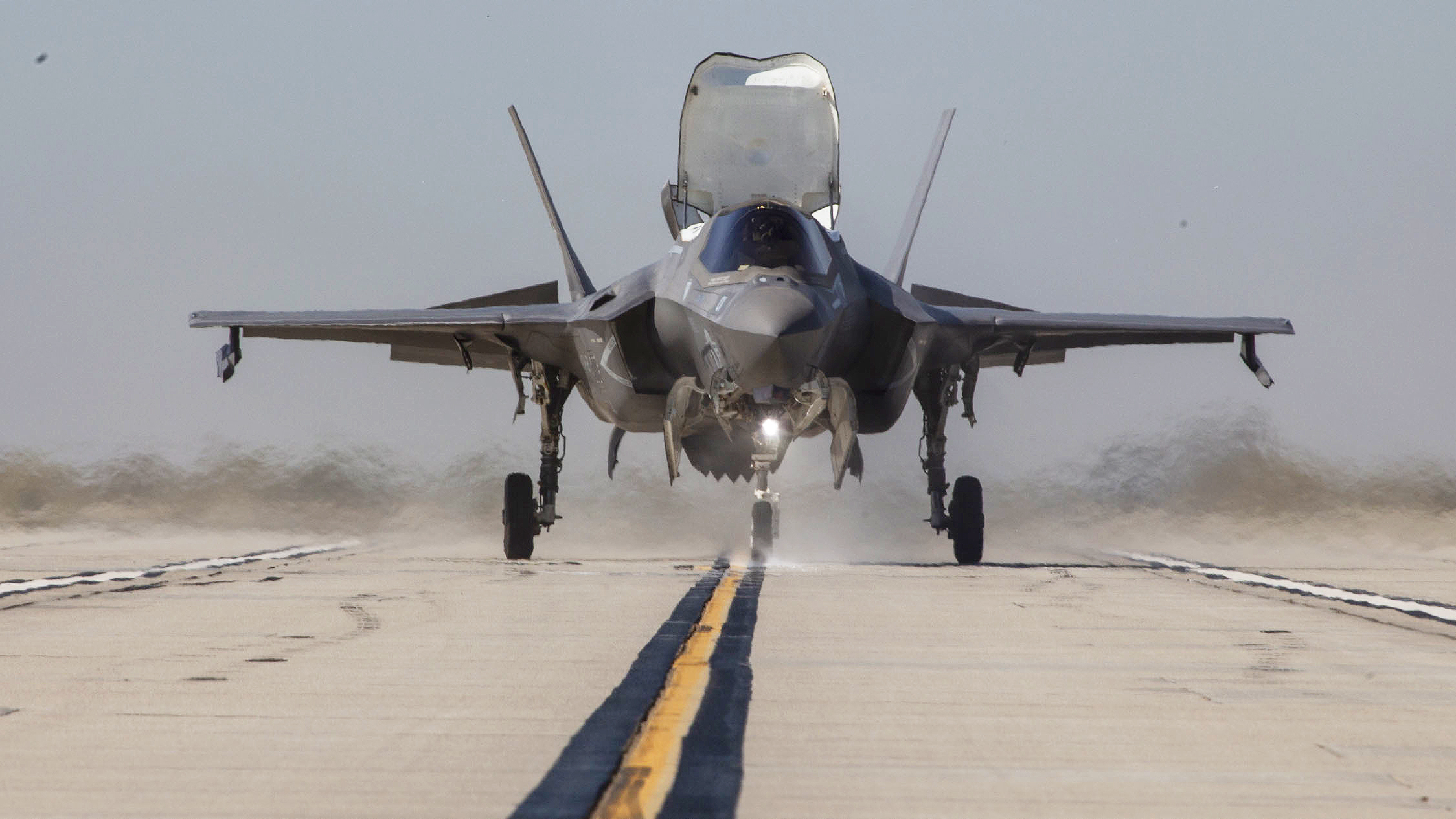
One of the interesting things to come out of the echo taxiway tests was the precision of the Flight Path Marker (FPM), which shows you exactly where on the runway you’re going to land. Pilots realized the FPM is showing you where your head is going but it doesn’t really take into account that the aircraft’s got another 30 feet behind the pilot. With this in mind, pilots needed to put the flight path marker just a little bit forward of their desired landing point. After several days of testing, VMX-1 was able to get interim flight clearance for 53 feet, which just happened to be the exact width of the road on the old Pacific Coast Highway at Camp Pendleton. During the echo tests, pilots also tested max gross weight while operating in ‘Beast Mode,’ with takeoffs exceeding 50,000 pounds carrying four bombs and two AIM-9Xs externally.
Events like Obsidian Iceberg are a reminder of why the USMC chose the F-35B with its STOVL capabilities. Col. Sullivan flew the F/A-18 Hornet for most of his career, but understands the value that STOVL aircraft can bring to a fight. He told us, “I’m probably gonna screw the numbers up on this but when we looked at why we were buying the AV-8, and you looked at the possible war with the Soviets there was like 3,000 places you could land in AV-8, and like 120 where you could land a Hornet or an F-4 Phantom or something like that without going out and putting up arresting gear and everything else. Having that capability is tremendous. Now what we got to figure out is how we can do that without creating FOD issues for the motors.”
When in vertical mode, the F-35B produces roughly 19,000 pounds of thrust out of the back, and 20,000 pounds of thrust out of the lift fan which is a FOD nightmare for most landing areas. 75 knot landings seem to be a sweet spot for the F-35B, but FOD can still be an issue.
Teaming up with Marine Wing Support Squadrons (MWSS), VMX-1 has tested small mobile equipment that can be used quickly to clear roads of debris. This equipment has ranged from towed heavy duty leaf blowers types to smaller leaf blower backpacks. Another option the squadron has looked into is doing FOD removal themselves with the exhaust of the F-35. By slowly doing a pass over the runway with the nozzle slanted, some argue that the power generated should be able to blow most FOD off the landing area.
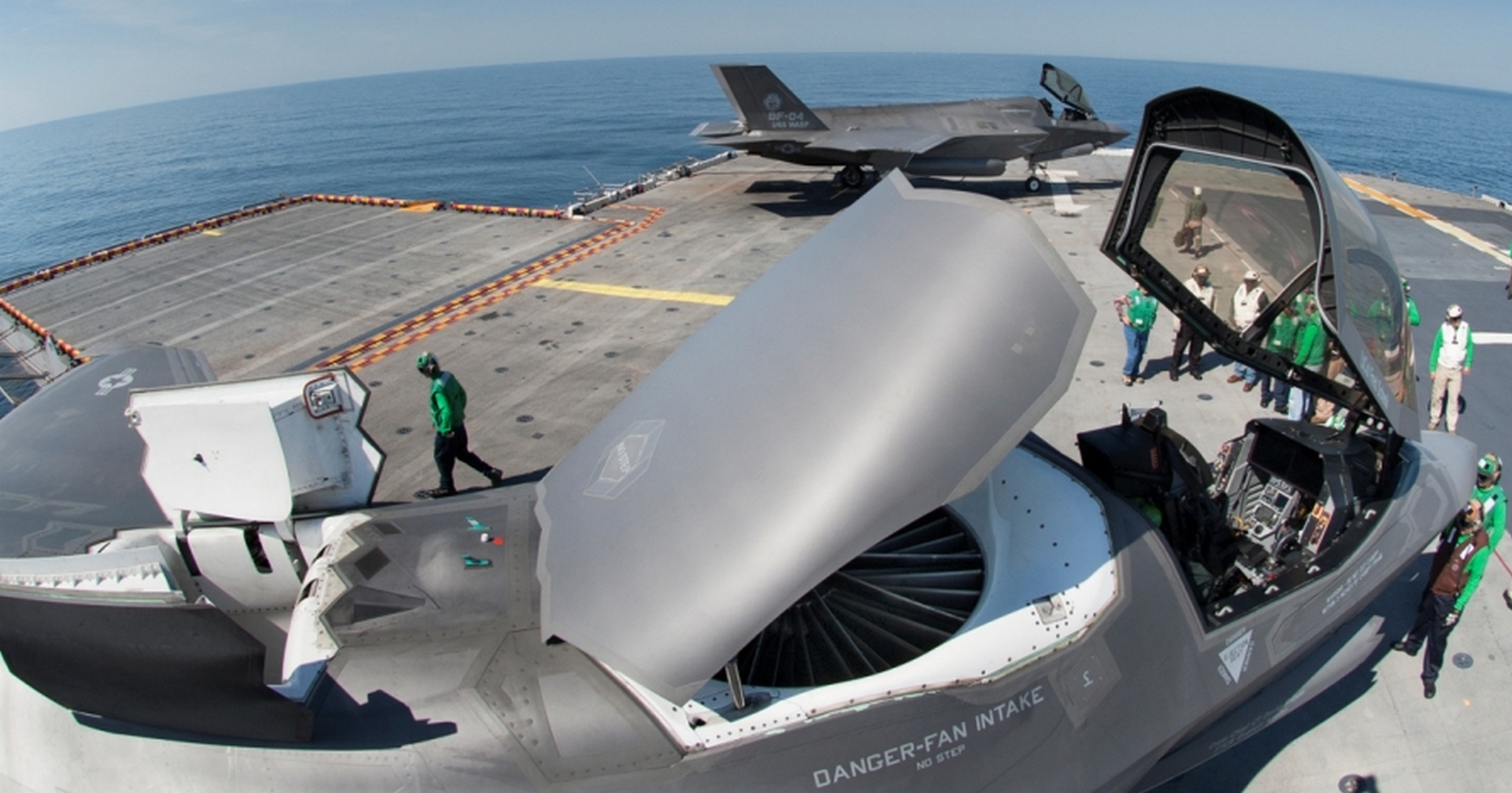
Short takeoffs can also lead to issues because if you don’t do it right, pieces of the runway can break apart and get ingested into the engine or strike the aircraft and nearby assets. Mitigating FOD on takeoff, pilots do what is known as a ‘trundle takeoff,’ where they first apply mid-range power and then let go of the brakes achieving the desired speed which is followed by more throttle and then take off. By moving at around 65 knots, it does not put as much thrust down on the road either from the front or back all at once, lessening the chance that FOD could be ingested.
All told, Col. Sullivan laid out a perfect scenario that explains what EABO is all about. He told us, “Imagine I get a message to go out and drop a bomb on target. I drop my bomb and I look around and I don’t see anything else. Because of my Link-16 or whatever data link systems I am using, everyone knows the status of my aircraft. They know I have no more bombs and missiles and they know how much gas I have. They send me over to an EABO which is currently inactive and they reroute some MV-22s that have some missiles onboard and some gas to give and they also reroute a CH-53K that can give some more gas. You imagine a fluid environment where you are told that the bad guys just blew up your base so now you are going to land somewhere else and this all happens with no comms. It happens with points on my map. I go land and an MV-22 gives me what I need or maybe the gas and ordnance is pre-staged in a conex box on some island.”
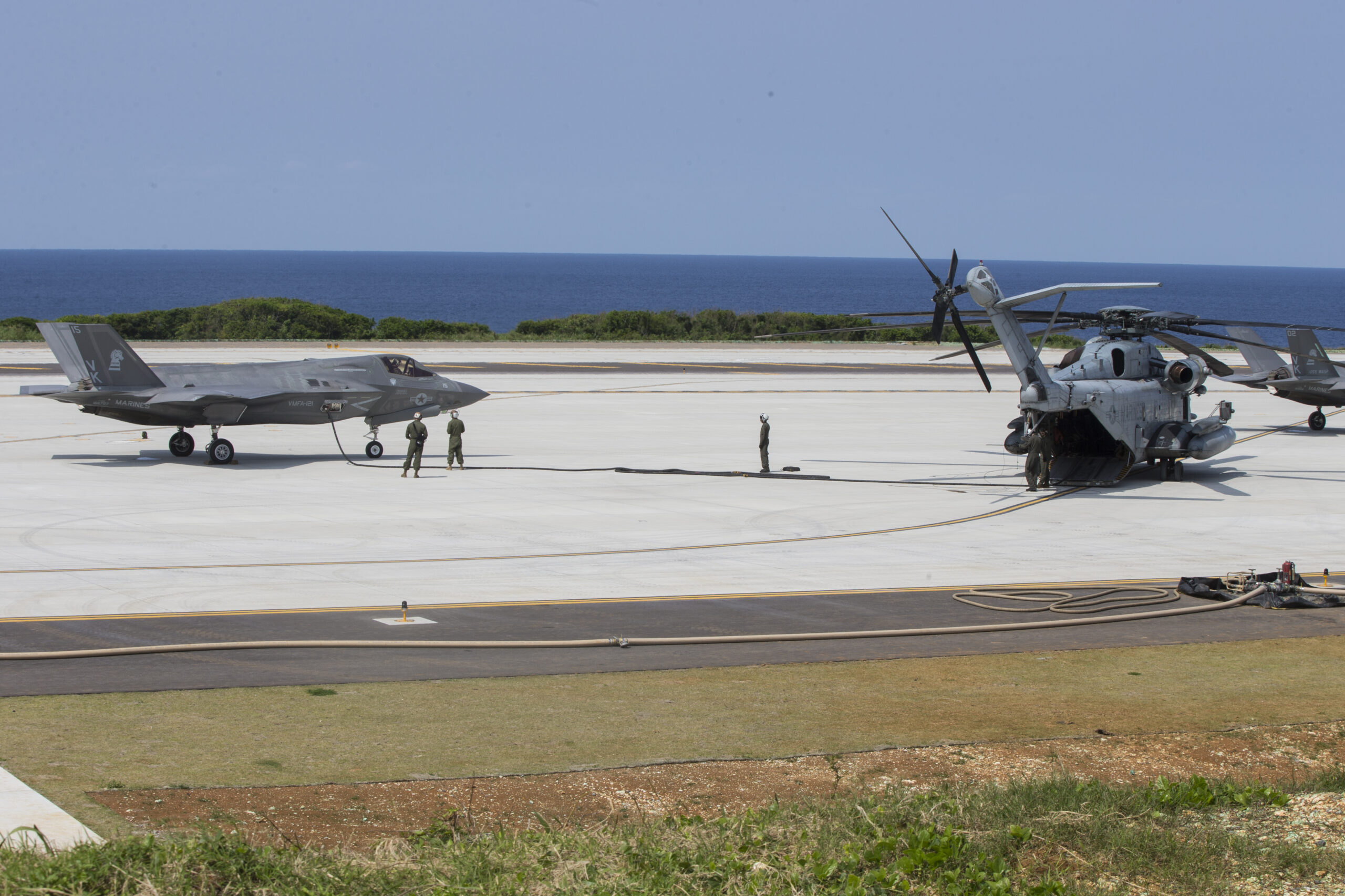
The Marine Corps’ aggressive testing of EABO in support of Force Design 2030 has shown that the force is very serious about operating in the enemies’ backyard, inside its weapon engagement envelope, with the constant threat of being attacked. The F-35B is very much the tip of the spear in this regard and VMX-1 will continue testing the F-35B in expeditionary environments over the coming months as they write the jet’s EABO playbook.
Stay tuned.
Contact the editor: tyler@thedrive.com
